
Mention Yellowstone, and the universal question asked is, “Did you see Old Faithful?” The Old Faithful geyser is a mythological landmark that, while well known and seen the world over, exists only for the travel connoisseur, photographer, and filmmaker to capture on their pilgrimage to this remote corner of our first national park. The reality is much more mundane: Old Faithful sits directly in front of three of the park’s major hotels. In order to claim a trophy and/or bragging rights to having seen Old Faithful, many visitors speed into the park, snap a photo, and are back in their vehicle before the geyser’s 5-7 minute eruption comes to an end.
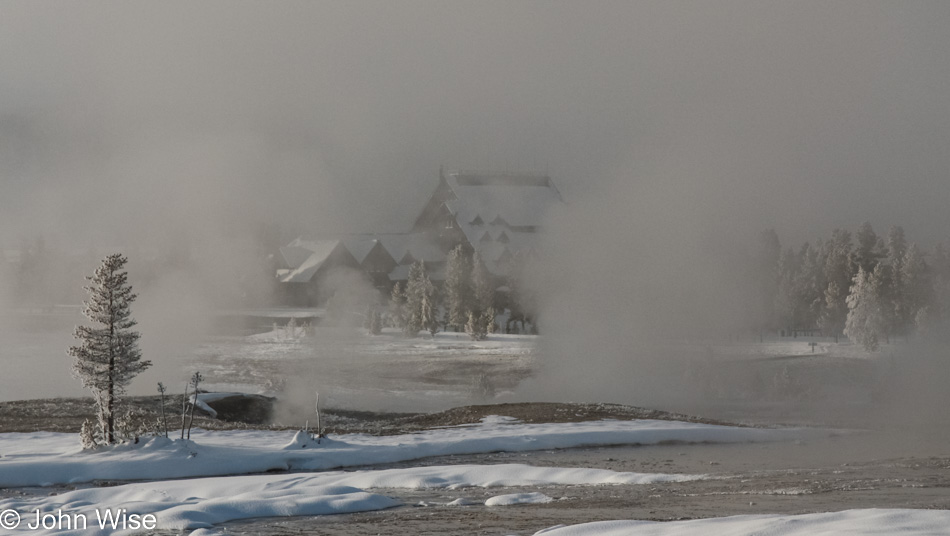
Caroline and I have seen this trusty geyser erupt from all sides, from the balcony at Old Faithful Inn to the Observation Point two hundred feet above the geyser basin and many points between. From this early winter morning eruption, seen above, to a late evening moonlit eruption, we’ve tried to see it with as much importance as we place on all of the other beautiful details we are fortunate enough to view. We have watched Old Faithful on springtime visits, in the middle of a summer day, during fall, and now during winter. But Yellowstone is so much more than Old Faithful; it is a bastion for wildlife. It is boiling mud and steaming sulfurous hot springs. It is America wild and free, a national treasure to throw in a cliche.
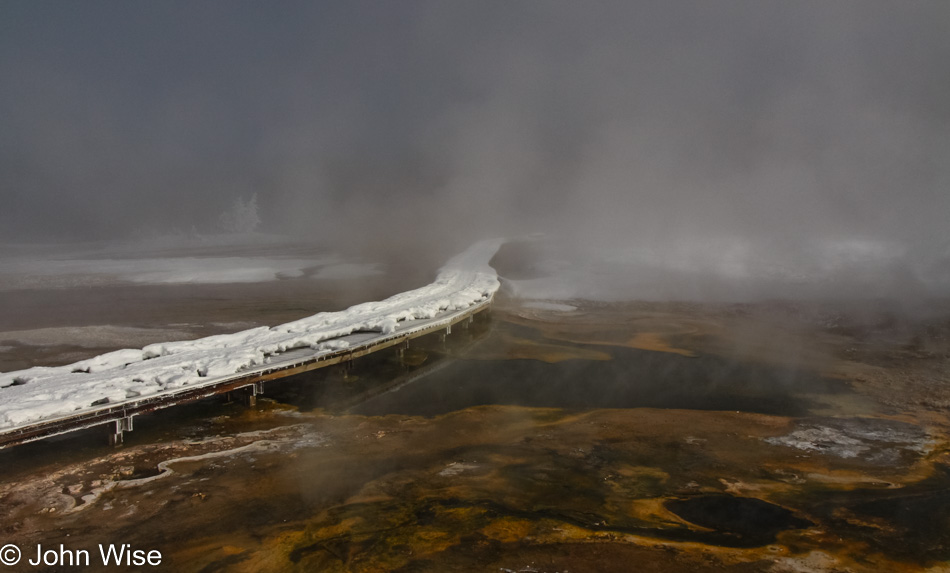
Today’s snowshoe expedition is taking us to the Black Sand Basin, but first, we must cross over the Upper Geyser Basin once more. You might be able to tell from the amount of steam and fog hugging the earth that today is significantly colder than yesterday.
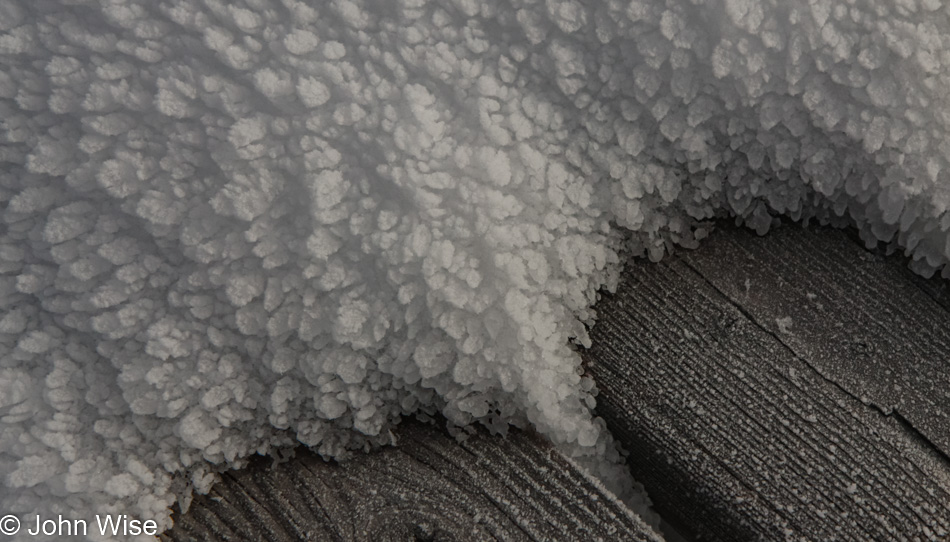
Hot water flowing underfoot and steam drifting over the basins create conditions that allow some quite peculiar ice formations to take shape. Maybe this configuration of stacked leaves of ice looking like fish scales [or sheepskin – Caroline] is mundane to someone who lives in Minnesota, but to my eyes, this is new and alien.

Yesterday, I mentioned ghost trees but never shared an image of one; well, here’s an example, and there will be more to follow.
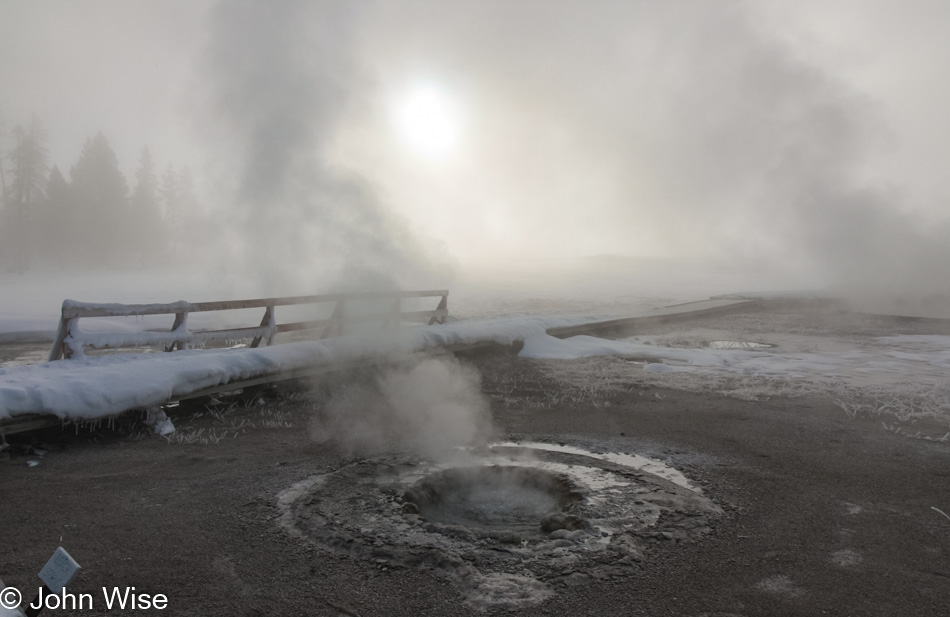
With the heavily reduced visibility out here on the geyser basin, the whole place is seen anew. What might have been familiar yesterday is rendered other by so many reference points erased by the fog and steam. Here at Beach Spring, this is anything other than beachy.
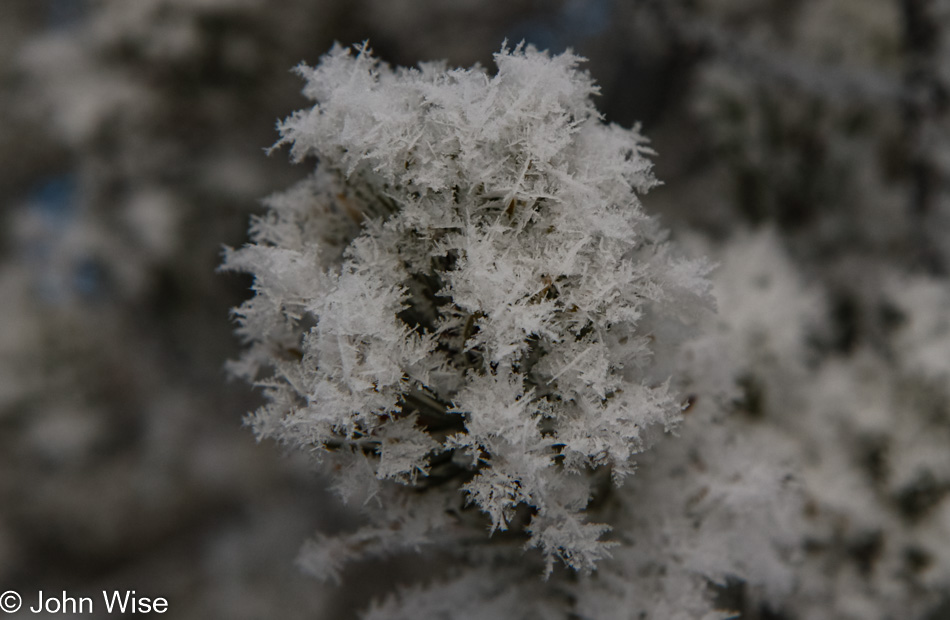
Clarifying things about ghost trees a bit further: in yesterday’s writing, I mentioned them, twice even, but when I wrote that, I was showing you trees covered in ice. To add some accuracy to the story, the steam that washes over the trees collects on leaves and needles as ice crystals; I guess the fog, too. As they accumulate, they look like piles of snowflakes, which makes sense when you consider that snowflakes form on dust particles in the atmosphere, so the tip of a leaf or needle probably makes for a good point to bond with for water vapor. Then, as the sun rises and the snowy camouflage begins to melt, things start dripping, and if the air temperature chills quickly enough, icicles start to form.

Caroline is on the trail between Lion Group and Liberty Pool next to the Firehole River, mesmerized by the ghost trees ahead of her.

Well, this is nearly impossible to photograph in a way that you can see exactly what we are looking at. The air is FULL of diamond dust. This is also called a ground-level cloud that has taken form on an exceptionally cold day. Then, as I was trying to learn more about the phenomenon, I read that I was actually already familiar with diamond dust, as that’s what we are looking through when we witness a sun halo or sun dog.
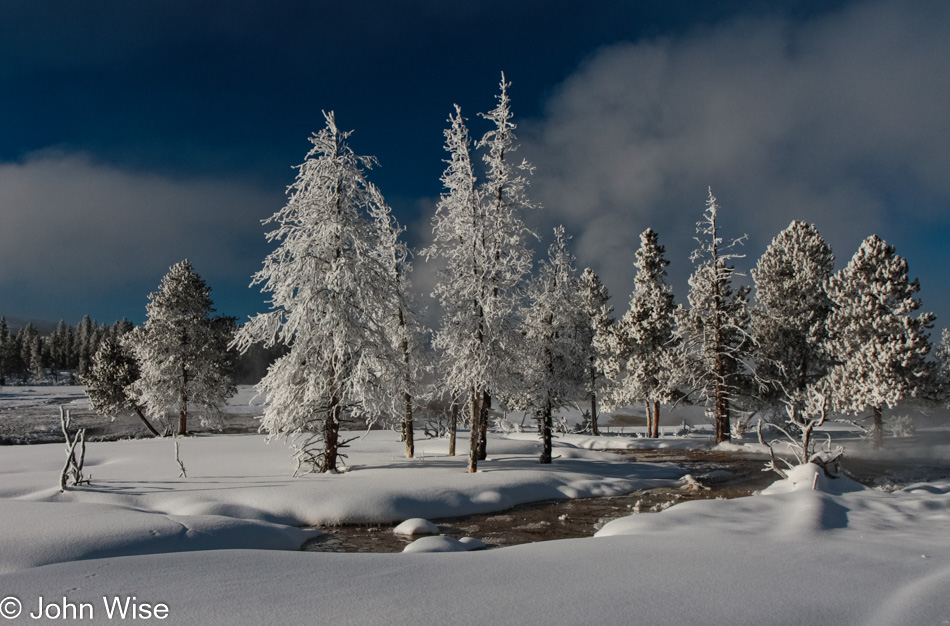
Ghost trees, diamond dust, steam, fog, blue skies, and two toasty people on hand to witness it all. Oh yeah, we were heading to Black Sand Basin and were not supposed to get lost in all the magical sights we were seeing and experiencing this morning.

Liberty Pool is usually a non-descript and not very colorful hot spring at other times, but reflecting ghost trees in its black waters make it a spectacular feature.
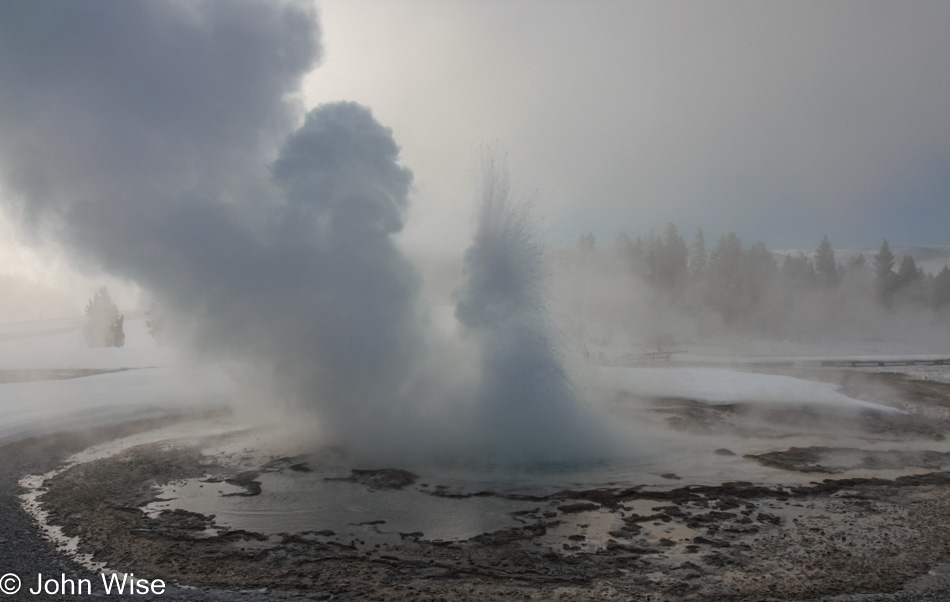
Sawmill Geyser will only capture 15 or 20 minutes of our attention as I swear we really are trying to get to our destination instead of getting lost in wonder.

For anyone who knows us, you couldn’t have believed the end of that last sentence as you’d know we’d give about anything to be lost in wonder. Why else would we have kitted ourselves out with so much technical winter gear if not to explore an environment that can dip below minus 20 Fahrenheit?

Earlier in the day, our balaclavas were pulled down to our eyebrows and up to the bottom of our glasses; it was that cold. It doesn’t take long walking through the snow to warm up and soon find that you have too many layers on, but you wouldn’t have made it out in this kind of extreme cold had you worn anything less. Lucky me that Caroline will gladly take my shell and wrap it around her shoulders and all I have to offer her is this big warm smile.

We walk out into the fog, stride into the cold of the morning, and thank our lucky stars that we have the ambition to explore the extraordinary. Not everyone cares about where they are in life, even though they may fret about what they have or don’t have. What they are really concerned about is that they don’t have the aspiration to do anything about changing things. Change is uncomfortable and can leave you feeling alone and lost in a kind of spiritual winter, but it’s up to you to endure and see the sun shining through, no matter the difficulty.
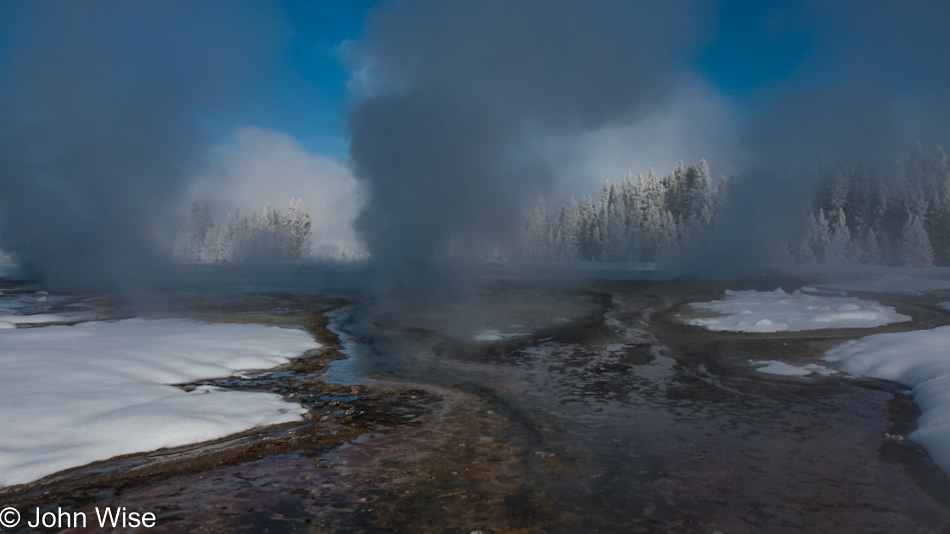
As we near the Daisy Group, we are on the segment of the trail that will take us over the main north/south road that bisects Yellowstone, letting us begin our first winter visit to the Black Sand Basin.
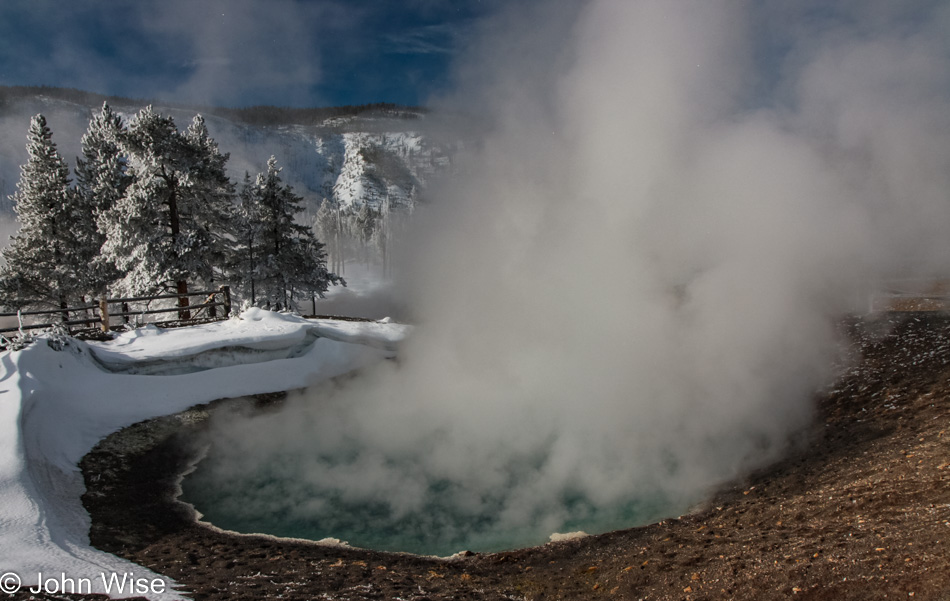
Black Sand Pond, while still on the east side of the main road, should, at least by its name, be part of the basin, right? On the trail here this morning, we passed one other snowshoer but were otherwise alone. Hmmm, saying we were alone could imply that even with one another, we were alone; well, that’s not what I meant at all. We are here with every moment of time that has ever preceded us, carrying the mantle of life and acting as the ambassadors of perpetual happiness.
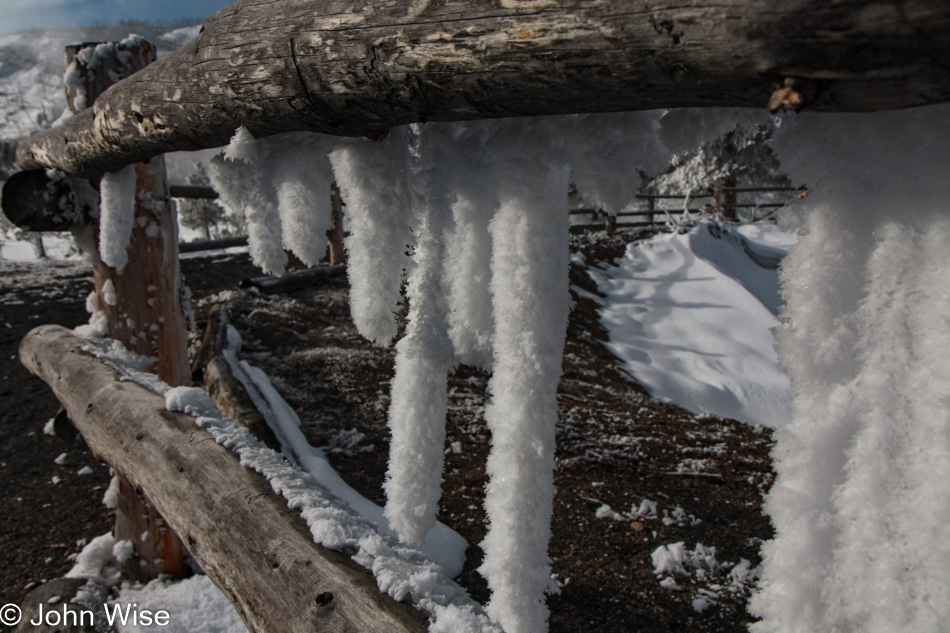
And then, when you think you’ve seen it all, the universe presents you with snow tails hanging on a fence and leaving you a mystery you know you’ll never want an answer to so as to not explain the unknown.

I wonder what Cliff Geyser might have looked like 1,000, 5,000, or 25,000 years ago? What will it look like 100, 500, or 1,000 years from today? I can’t begin to answer those questions but I can assure you that what I personally photographed here today, in fact, looked just as it appears above. Maybe the following is a well-worn trope here on this blog by now. I can’t remember, but I’m still astonished that Caroline and I will be the only two people in the history of humanity who will have witnessed this very moment in this corner of the earth.

Millions will choose to see the same football game, American or Global, and millions will listen to the same songs, play the same video games, and simultaneously dig into a Big Mac, but only Caroline and John Wise will look overhead here at Black Sand Basin on a Friday afternoon in January 2009 and be dazzled by three bald eagles gliding effortlessly south without so much as flapping a wing.
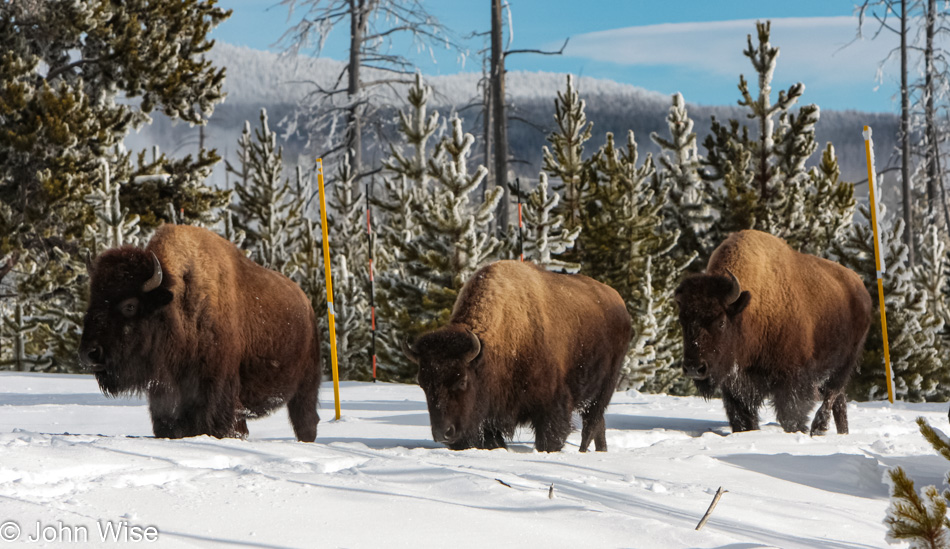
Part of me wants to take Photoshop to those yellow poles and erase them so I have a perfect nature shot of bison trodding on the snow in silent step with one another. The problem with that is I’d be covering up imperfection, and while in my eyes and from my words, it could appear that all is perfect in our world, there are always blemishes, though they should never take a front seat to elevating all we can to perfection.
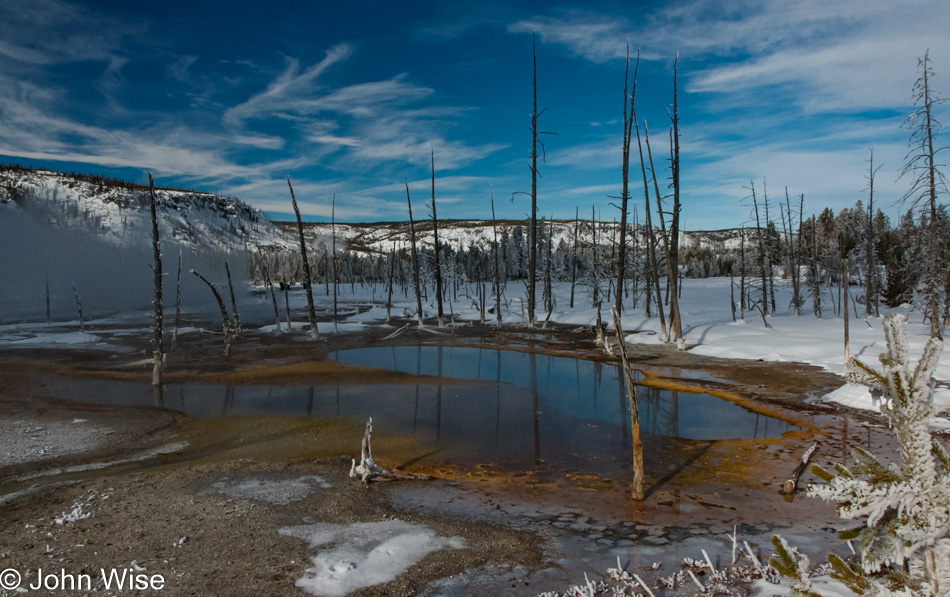
Denuded nearly branchless trees sure look appealing to me in their stark contrast to ghost trees, psychedelic frost art, herds of bison, or the two people on the other side of the camera.
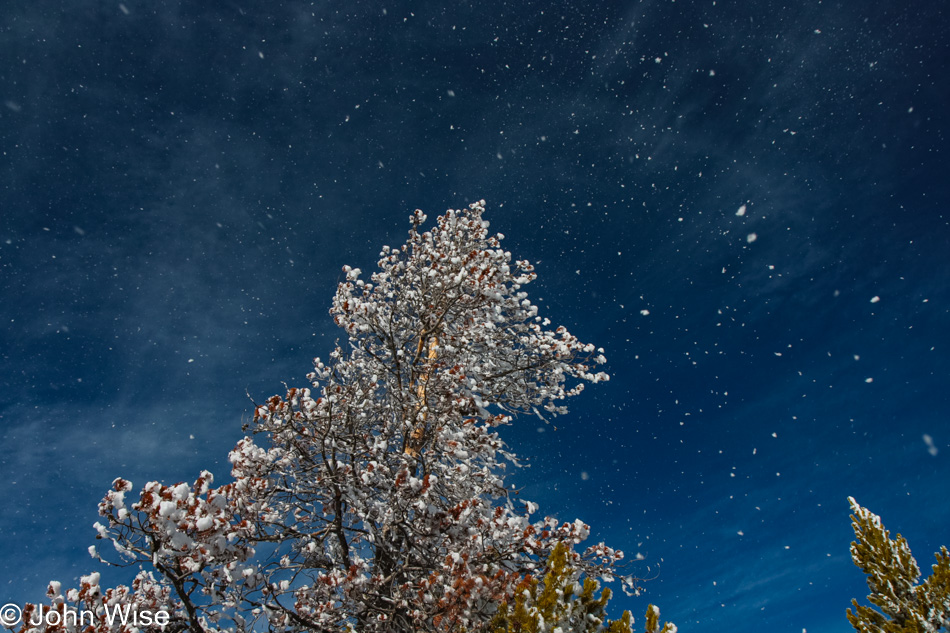
An hour and a half watching life roll by here at Black Sand Basin was thoroughly enjoyed. When a breeze came along and shook some snow from the tree, we were, for a moment, caught in a snowstorm under blue skies, a first for us. Of course, everything about this journey into Yellowstone has been a series of firsts for us while also being a glaring admission that my poverty of language doesn’t afford me enough superlatives to adequately explain or relate a fraction of our days, hours, minutes, seconds.
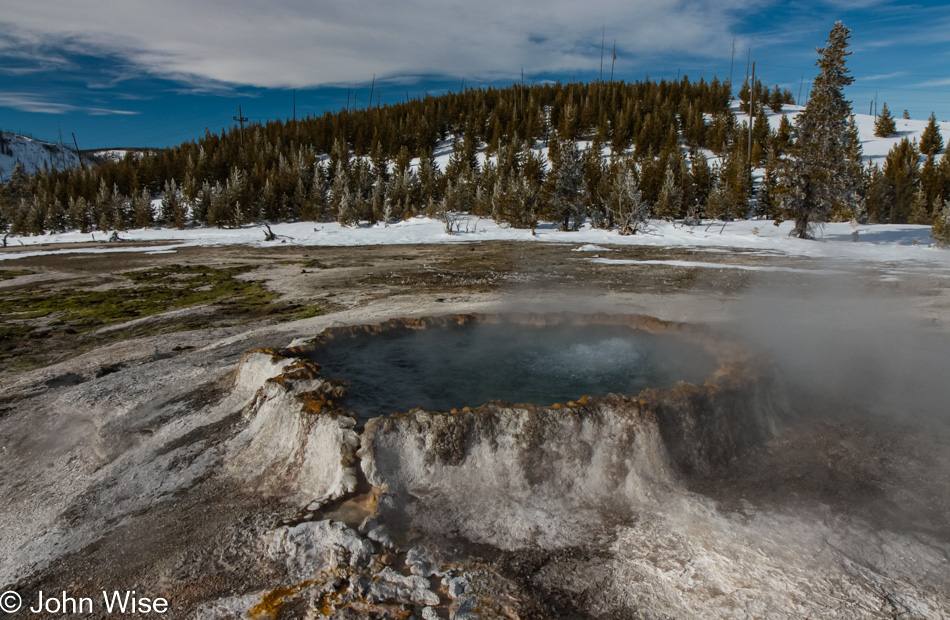
Punch Bowl Geyser back at the Upper Geyser Basin signals that we are on our return journey.
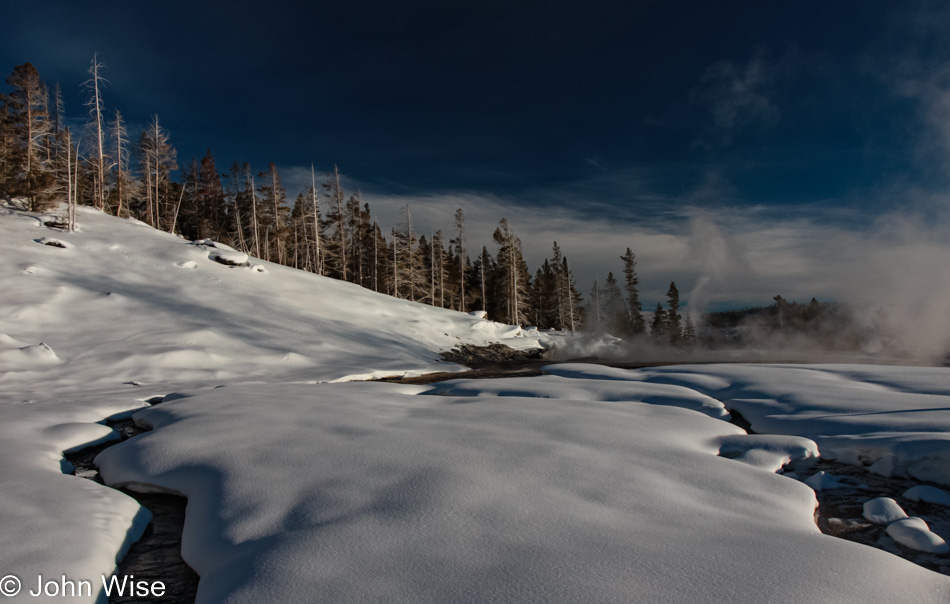
Along the way, we passed four cross-country skiers, including the Shefflers from Washington, whom we bumped into again and again during our eight days in Yellowstone. With the roads snowed over and a small fraction of the number of visitors that are attracted to Yellowstone in the winter compared to summer, this really is the time to feel nearly alone in the park, seeing it much the way it has been for the better part of the last half-million years before hordes of tourists arrived.
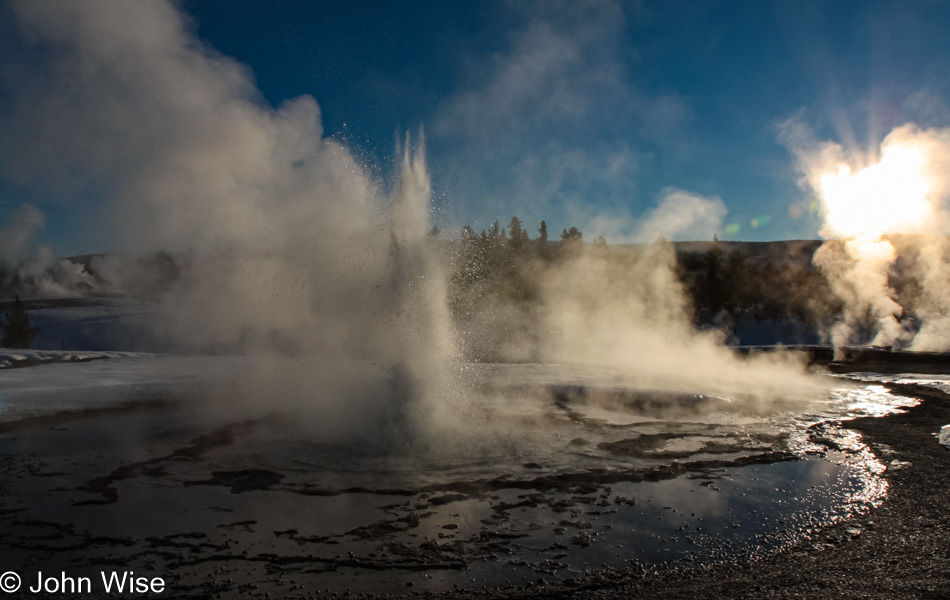
If you arrive at the recognition that we have a fascination with Sawmill Geyser verging on obsession, you wouldn’t be exactly wrong, except we are just as enamored with West Thumb, Artist Paint Pots, the meandering waterways cutting through meadows, night skies, hissing gasses, bubbling vats, and the crazy play of light here in Yellowstone.
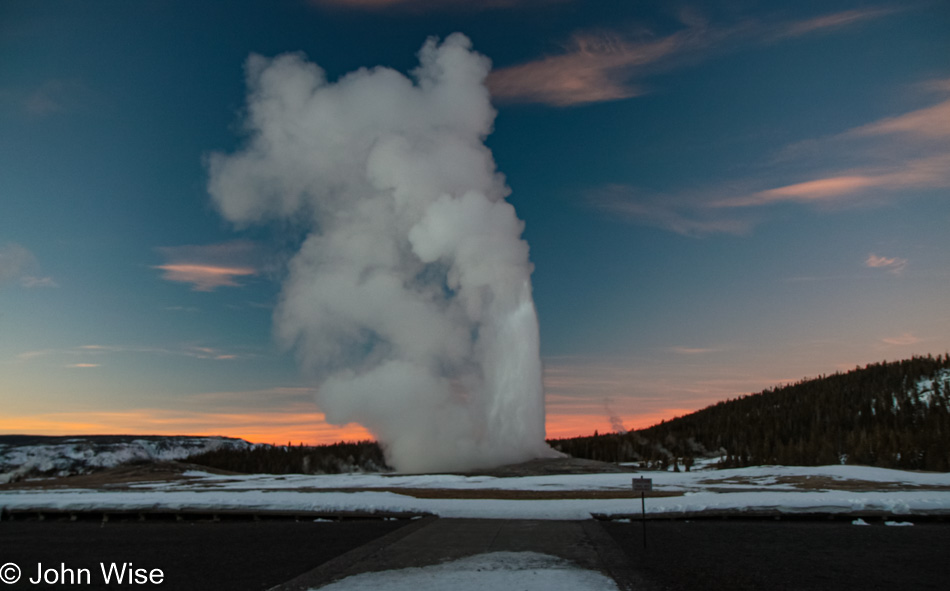
The day started with Old Faithful and ended with Old Faithful, too. I wish you could see what you don’t see without me having to tell you, but there are no people between us and the geyser. They were not removed by Photoshop; they didn’t step aside so we could have an uninterrupted view, nor did we pay anyone for a private screening. This really has been our life where when we put ourselves out in it, we seem to have it all to ourselves.
I love that photo, John. The longer I look at it the more I see. Really fun to lose one’s self in.